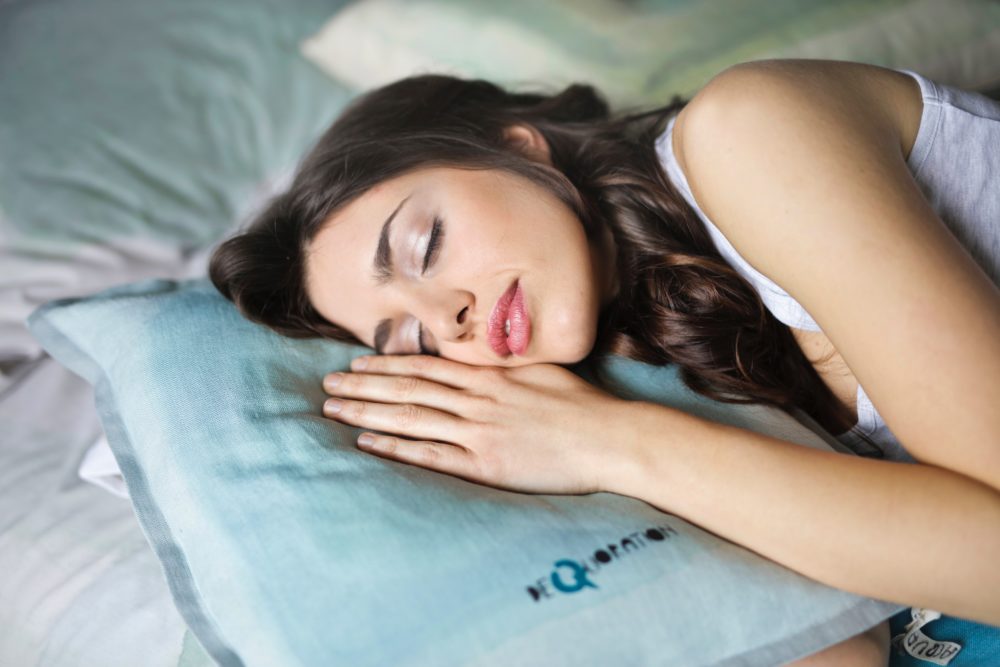Turns out, getting a good night’s rest is more than keeping your eyes shut for eight hours straight. We asked the experts to let us in on the best positions to sleep in, so that you wake up ready to take on the day…
Waking up on the wrong side of the bed is more than just an idiom. If sleep studies are to be considered, the shut-eye position and the side you choose to sleep on impacts the quality of sleep and its subsequent benefits. Whether you pass out curled up or straight on your back can determine if you wake up feeling recharged or drained out.
Any position that alters the natural curve of your spine and neck can cause aches and muscle pulls as well. If paid attention to, the position in which one falls asleep may iron out a number of medical conditions, from backaches and pain to sleep apnea. If you snore or suffer from sleep apnea, sleeping on your side is considered ideal, while sleeping on your back is touted to be the worst for these conditions.
If you tend to wake up with a lot of neck pain in the morning, it could be because you’re sleeping on your stomach or your back. “In both positions, you tend to twist your head more as you try to get comfortable, which can contribute to the neck pain. In many sleep surveys, participants who sleep on their side tend to experience less pain in their neck, arms and shoulders,” states Dr Manoj Kutteri, wellness director, Atmantan Wellness Resort.
BEST SLEEPING POSITIONS

Interestingly, the right side to sleep on is actually to your left. “Sleeping on the left side improves digestion and promotes heart health, because lymph drainage toward the heart and food movement from the small intestine to the large intestine will be helped by gravity,” explains Dr Chitra Kataria, chief of rehabilitation services, principal, ISIC Institute of Rehabilitation. While we cannot completely choose our sleeping position, there are means to nudge the body towards the ideal one for you even in its semi-conscious state. “Place a pillow or a soft ball on your back so that whenever you feel the urge to roll over, you meet with resistance from the ball or pillow and curl back up to the left side,” adds Dr Kataria. Here’s a peek into common sleeping positions and how minor tweaks can help you optimise your snooze time.
1) The foetal sleeping position

Do you curl up on one side like a foetus in the womb? Then you are sleeping in the most common position—foetal. “The foetal position is favoured by 47 per cent of sleepers according to a Better Sleep Council study of American sleepers. The most natural alignment of the spine is obtained in this sleeping position,” states Dr Kataria. “It has also been correlated with lower incidence of Alzheimer’s or Parkinson’s, because the brain may be doing a better job of clearing wasteful memories in the foetal position. Pregnant women also benefit from this position because the uterus is not pressing against the liver, and circulation to the baby is improved,” she adds.
Studies have indicated that people who sleep in the foetal position are warm and friendly, but are also more likely to be sensitive on the inside and have a tough, protective exterior. A loose foetal position (where you’re on your side, your torso is hunched and your knees are bent) is also good for snorers.
The downside
If you have breathing problems, this position can be restrictive. Resting in a foetal position that’s curled up too tightly can restrict breathing in your diaphragm. And it can leave you feeling a bit sore in the morning, particularly if you have arthritis in your joints or back. “Prevent these woes by straightening out your body as much as you can, instead of tucking your chin into your chest and pulling your knees up high. You can also reduce strain on your hips by placing a pillow between your knees,” advises Dr Kutteri.
2) The log position
If you sleep on the side with both arms down, you most likely sleep like a log. This position (where your torso and legs are relatively straight) also helps decrease acid reflux, and since your spine is elongated, it wards off back and neck pain as well. Pregnant women are advised to sleep on their left side to induce optimal blood flow.
At Atmantan Wellness Resort, personalised counselling targets the root cause of niggling health concerns. Advising guests on their sitting and sleeping postures is part of the programs at the retreat. “Those who suffer from sleep apnea or are persistent snorers are suggested to sleep in this position, as it keeps airways open. If you’ve suffered from a lot of heartburn at night, then try sleeping on your left side,” says Dr Kutteri. Studies have also suggested that sleeping on the left will relieve heartburn, while sleeping on the right-side might actually make it worse—yes, it’s that specific.
The downside
“The log position causes slight pressure on the hips because the legs are not straight, but this can be overcome by placing a towel or pillow between the knees,” says Dr Kataria. Another side-effect of sleeping on the side is premature wrinkles, as half of your face gets pushed against a pillow for the better part of your regular eight sleeping hours.
3) The freefall position

The snooze style where you sleep on your stomach, with arms wrapped around a pillow and head turned to the side is called the freefall position. It is believed that people who sleep this way are more likely to be outspoken and outgoing. If the airway of your throat feels really constricted at night, then you probably want to sleep on your stomach. That’s why this position is considered great to ease snoring.
The downside
Stomach sleepers put pressure on their muscles and joints, possibly leading to numbness, tingling, aches and irritated nerves. Since it’s hard to keep your spine in a neutral position, this one can lead to back and neck pain. “To smoothen out the cons, try lying face down to keep the upper airways open—instead of having your head turned to one side—with your forehead propped up on a pillow to allow room to breathe,” suggests Kutteri.
4) Sleeping like a soldier
Sleeping flat against the bed on one’s back has few practitioners, but is considered one of the healthiest positions to sleep in. And if the legs and arms are spread out, it’s referred as the starfish position.
Lying down on the back allows your head, neck and spine to rest in a neutral position, making it the soundest one to opt for orthopedically speaking. This way, where you sleep facing the ceiling, is ideal to ward off acid reflux. Kutteri adds, “Just be sure you use a pillow that elevates and supports your head enough—you want your stomach to be below your oesophagus to prevent food or acid from coming up your digestive tract.” And it keeps those wrinkles at bay too.
The downside
Sleeping on the back can aggravate the intensity and frequency of snoring. “Sleeping supine causes the lungs and diaphragm to move up and stay in an expanded position, or [in] an unnaturally depressed position if you use a pillow behind your neck. This causes irregular breathing and aggravates sleep apnea. Sleep apnea occurs when the throat muscles tend to tighten [as you sleep], or when the brain doesn’t send proper signals to the muscles that control breathing,” explains Dr Kataria.
Sleep tight
While you can tweak your sleeping position to avoid the unflattering side-effects, you can’t change your position completely. It’s important to go with what feels natural and work on small changes to improve the quality of sleep. At Ananda Spa in the Himalayas, sleep or shut-eye is increasingly being included as a vital part of rebalancing energies and rejuvenating the body and mind. Dr Chandan MC, a senior ayurvedic physician at Ananda Spa, explains, “A good night’s sleep, which is a luxury in the fast-paced urban life, is actually a bare necessity to keep the body and mind in sync. Certain oils like rosemary and lavender act as catalysts to calm the mind, thereby leading the physical body to also relax and slow down.”
Sleeping right is also the cheapest and the most effective anti-ageing treatment. It’s time you mastered the art of switching off.
The article was first published in vogue.in





